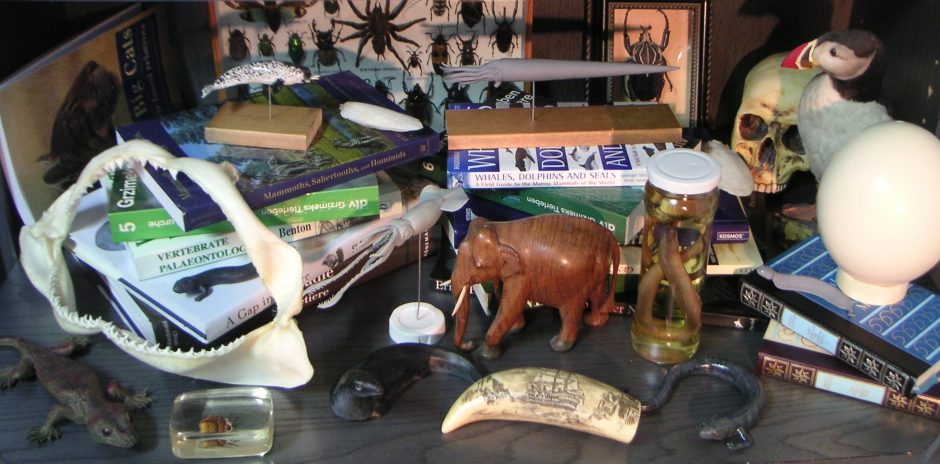The narwhal Monodon monoceros is almost a real-life fantasy creature. But not only due to its historical connection with the legendary unicorn – after all, a whale with an enormous tusk growing out of its head is much more fabulous than most legendary animals from ancient bestiaries which don’t even exist. If we would know narwhals only from fossils, we would surely deeply regret that we could never see this marvelous beast alive. But this creature – one of the most bizarre cetaceans which ever evolved – is an extant species and a good reminder that we still live alongside many incredible animals which can easily compete with the most extraordinary beasts of prehistoric times. There is a lot to say about narwhals, and it would be probably easy to write even a whole book only about their iconic tusks. I recently wrote about their rarely shown vestigial right tusks and a bizarre hybrid between a female narwhal and a male beluga.
Much about the exact function and use of the large torqued tusks still remains an enigma. Many assumptions about the functional use were based on examinations of the anatomy of the tusks, their surface, abrasions and wear patterns. Actual observations of active tusk usage are still extremely rare. A recent video shows that it has apparently really an assisting function for hunting however. But as usually only males possess fully developed tusks, it seems obvious that it has a role for sexual competition as well. Broken tusk tips found embedded into the skull bones of other males indicate that narwhals use their enormous teeth for physical interactions with other males as well.
One of the weirdest phenomena you can find within the cetacean literature are cases of broken narwhal tusk tips inside broken narwhal tusk tips. Errmmm…. What!? To avoid further confusion, I will show you some examples from which I took photos at the University of Copenhagen Zoological Museum.
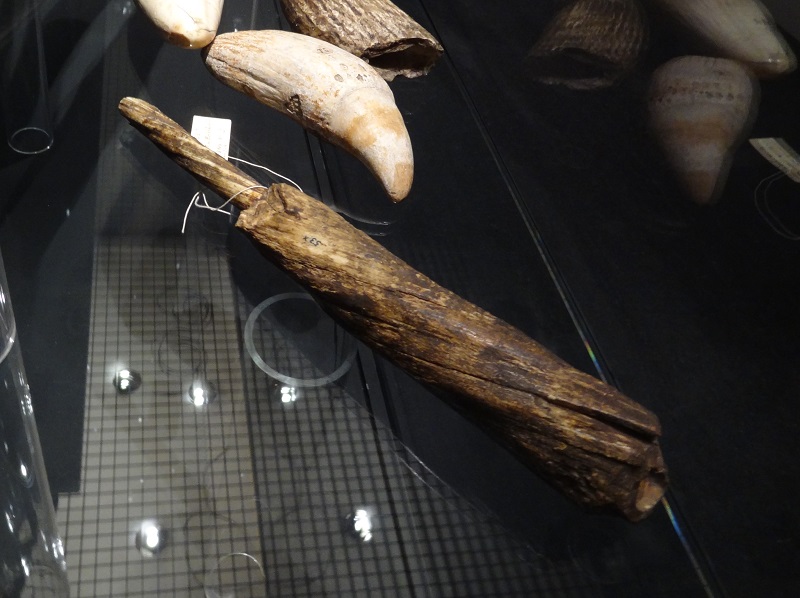
There are three of such tusks on display, however one of them is just a short fragment.
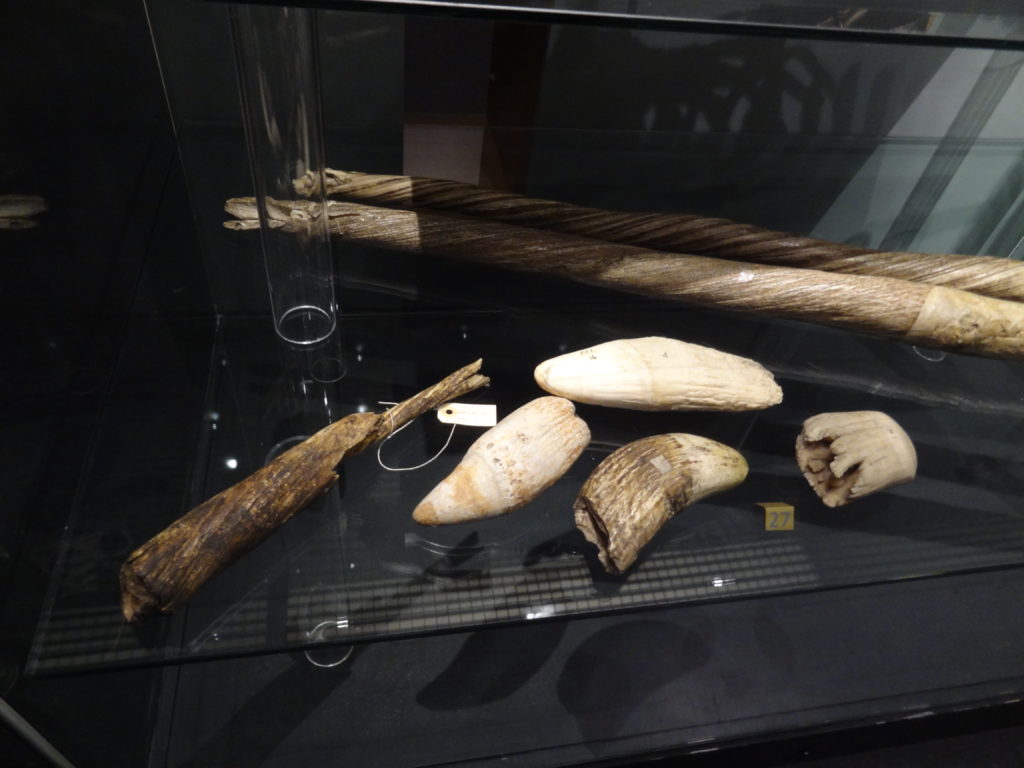
There is a considerable part of the tips broken off, and you can see the cavity which was originally filled by the pulp. And within this cavity is a plug of torqued ivory, which perfectly fills the opened tusk.
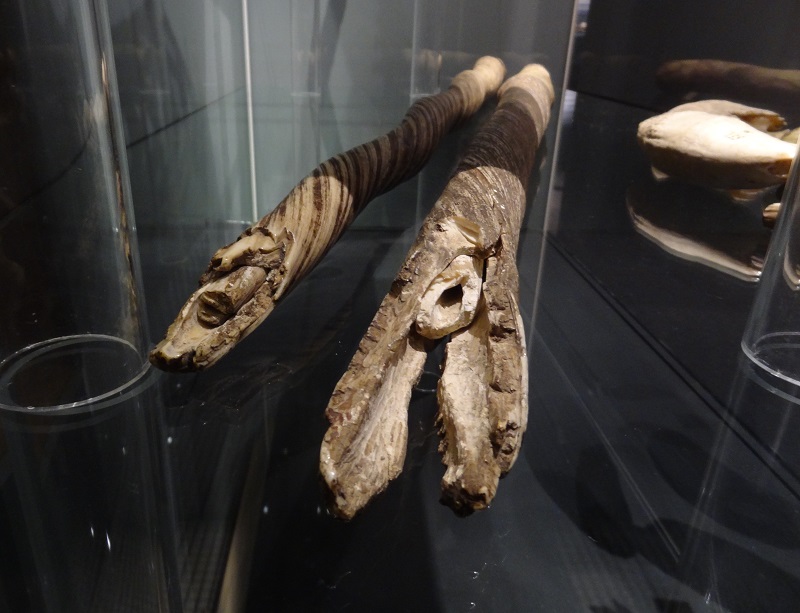
There are also longitudinal fractures and some bending of the tusk around the plug, and it looks like it was forcefully pierced into the broken end.
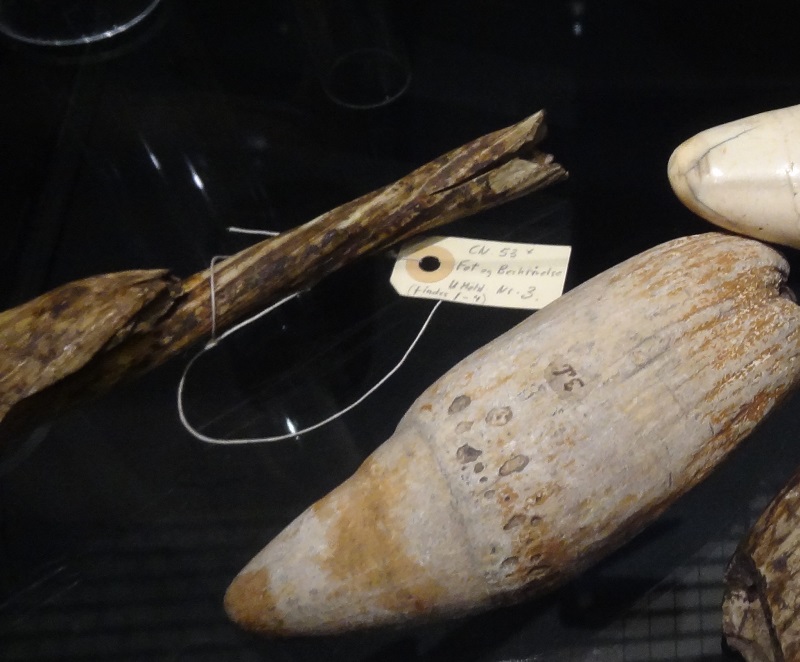
So what happened here? Was there a narwhal with an already broken tusk tip seeking help by Dr. Monodon who used its own tusk in an altruistic attempt to fill the aching fracture with its own tusk and break the tip off? Or to stay more seriously, could it be that it happened by accident that a male narwhal rammed its thin tusk tip during an interaction in the already fractured tusk of an opponent? Or could it be that narwhal bulls touch each others tusks and one tip became by chance plugged into the opening of the fractured tusk?

It really appears that something like this was happening, and the very existence of not just one but three such cases in a single museum could indicate some never observed behavior. However, as interesting as the idea of narwhal bulls accidentally practicing some sort of endodontic treatment to each others tusks appears, those broken tusks have a quite different background. It started with a tusk fracture, perhaps when a narwhal hunted fish on the sea bottom and had a traumatic collision with a rock. The tip of its tusk broke off, leading the whale quite likely in severe agony for some time. If something similar happens to a human, for example when an incisor is fractured and the pulp becomes exposed, it is just a matter of time until the pulpal tissue becomes infected by bacteria and necrotizes, at least if it is not properly treated. Under totally aseptic conditions – something only possible under laboratory conditions with totally germ-free mice or rats in an isolated environment – the exposed pulpal tissue can produce again new dentine at the fracture and seal the wound.
Fractured narwhal tusks can heal in a similar way without the usual necrotizing of the whole pulp and the resulting fatal conditions for the tusk. Perhaps this is due to the extreme size of the pulp and the many blood vessels within that lead to a better exchange of immune cells and lead also to a faster regeneration of the ruptured tissue. The seawater which always surround the wound might help as well. But admittedly, this is nothing but my personal speculation. It’s noteworthy that exposures of pulps in orcas – something quite common in captive specimens and those which specialize in hunting sharks and skates with highly abrasive skin – lead to necrosis of the pulps as well.
But narwhals can heal such fractures. When the cells at the outer area of the pulp-wound manage to produce a new formation of dentine the fracture is sealed. But this layer is apparently not tightly attached to the inner walls of the tusk. For this reason the ongoing apposition of reparative dentine forms over time a twisted plug which is pressed out of the pulp cavity, forming over time a tiny new tusk. And this is what appears to be the broken tip of a tusk rammed into the open pulp. The crack and bending of the fractured end were possibly also a postmortal artifact when the tusk dried.
I found the information about the reparative dentine of the broken narwhal tusks in the 2003 edition of Walker´s Marine Mammals of the World by Ronald M. Nowak. I was sadly not able to track down the original sources of Reeves, R.R., and S. Tracey.1980. Monodon monocers. Mammalian Species, no. 127, 7 pp and Newman, M.A. 1978. Narwhal. which was cited in Haley, D., ed. 1978. Marine mammals of eastern North Pacific and Arctic waters. Pacific Search Press, Seattle, 138-44. If anyone reading this has access to this original sources or any other information about this topic, I would be quite interested.
